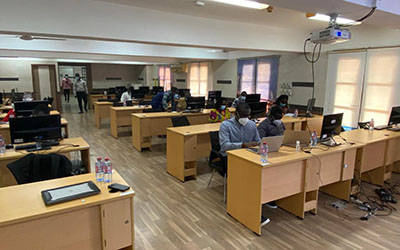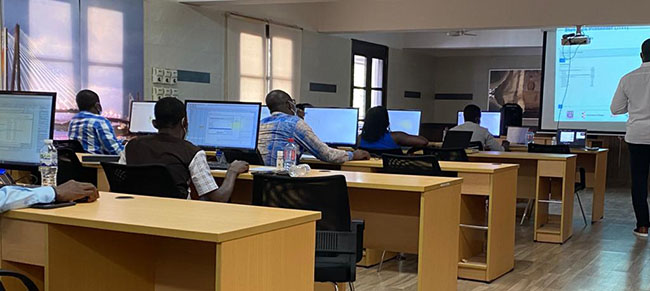
Kwabena Adu-Ababio is a research assistant at UNU-WIDER, also pursuing a PhD at the University of Helsinki. His work at UNU-WIDER focuses on tax-benefit microsimulation models as well as Tax administration and organisation. His research interests...
The third training on the use of GHAMOD, a tax-benefit microsimulation programme for Ghana, introduced participants to the latest version of the programme. Altogether 15 professionals and researchers working on tax and social protection issues in ministries, research institutes, universities, and NGOs participated in the training.
The training started with an introduction, to explain the potential benefits of using microsimulation and the type of research that GHAMOD can be used for. The training also included an overview of the model, the underlying data, and the microsimulation software. The emphasis was on exercises, where different case studies were examined using GHAMOD.
 Attendees left with an appreciation of how to navigate and interpret the GHAMOD user interface; how to run GHAMOD; and how to build and implement a basic policy reform.
Attendees left with an appreciation of how to navigate and interpret the GHAMOD user interface; how to run GHAMOD; and how to build and implement a basic policy reform.
Tax-benefit microsimulation models, which combine representative household-level data on incomes and expenditures and detailed coding of tax and benefit legislation, have proven to be an extremely useful tool for policy makers and researchers alike. The models apply user-defined tax and benefit policy rules to micro-data on individuals and households and calculate the effects of these rules on household income. The effects of different policy scenarios on poverty, inequality, and government revenues can be analysed and compared.
Ghana, like other developing countries, is now building up its social protection system and the financing of public spending will need to be increasingly based on domestic tax revenues. In this process, understanding the system-wide impacts of different policy choices is critically important, and tax-benefit microsimulation models are very well suited for this purpose.
With GHAMOD, users can simulate hypothetical reforms of the tax-and-benefit system. They can estimate, for example, the number of beneficiaries and analyse the characteristics of the prospective recipients of a hypothetical benefit. GHAMOD also allows users to implement hypothetical income tax and social security reforms and calculate their effects on the government budget.
GHAMOD has been developed under the UNU-WIDER SOUTHMOD project, in collaboration with ISER (University of Essex), UNU-WIDER and University of Ghana.
